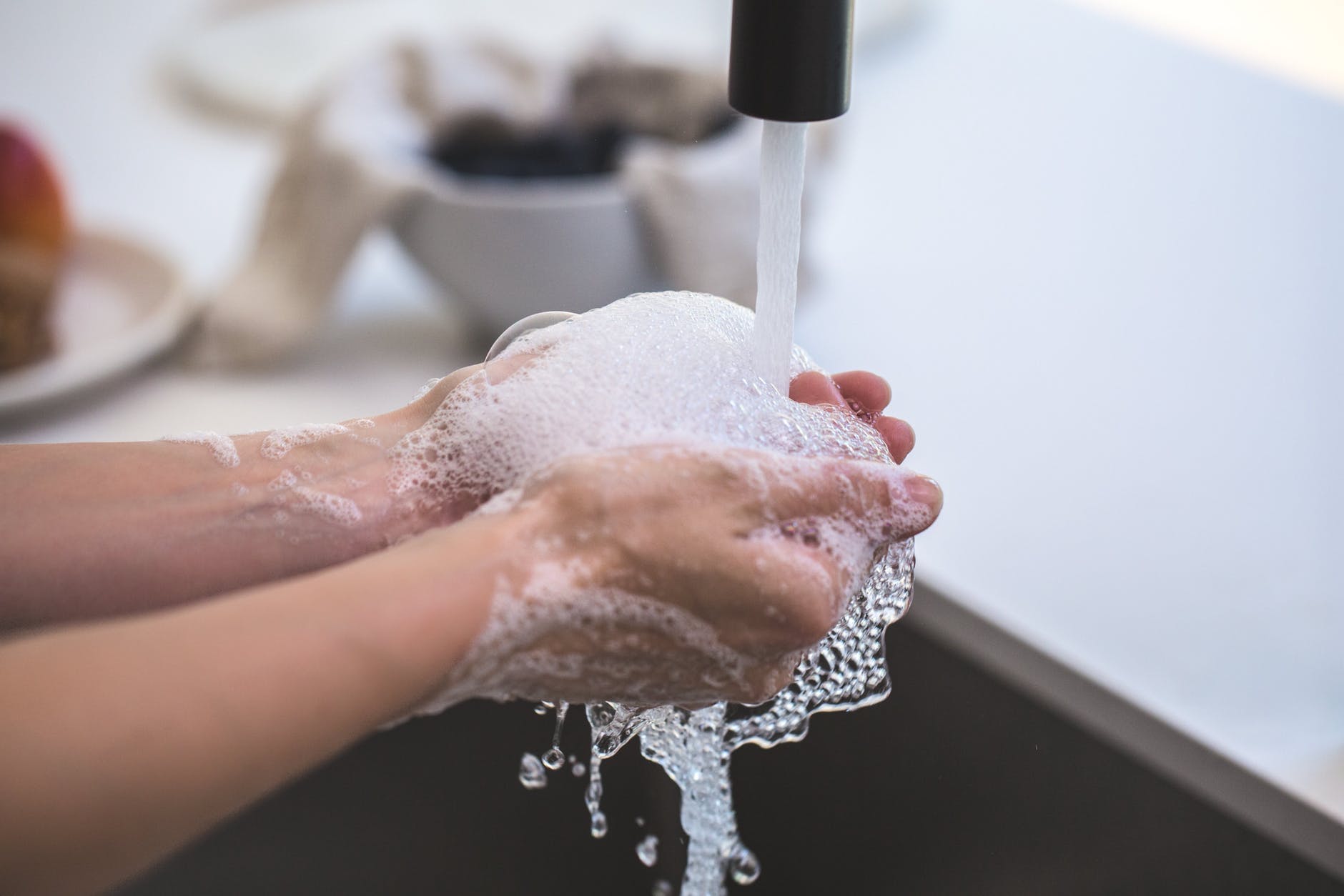Happy New Year!
At the end of December, we put our planner away and the to-do lists aside and just focused on enjoying time with family and friends. The past 2 weeks have been wonderful; we had a chance to reconnect and recharge. However, we are ready to get back into a routine! Thank you for hanging in there while we took a short break. This next year will be full of new experiences and new recipes that we are so excited to share with you here!
Before we dive back into recipes – and food allergy friendly finds – we want to talk about some kitchen basics. Food safety is a priority for us ALL the time since cross contact can happen so easily; especially if you do allow your allergen in your kitchen.

- Wash your hands – Washing your hands is the easiest way to stop the spread of food borne pathogens that could make you sick. The US FDA recommends washing your hands for 20 seconds with hot, soapy water, or just sing the ABC Song! Get scrubbing!
- Sanitize your kitchen – I know we all love to use Mrs.Meyers smell good kitchen sprays, but they offer no actual sinitzation! We like to use spray bleach in the sink and around the counter tops, then I like to rinse with hot soapy water. The kitchen sink is known for having more bacteria than a garbage can!
- Clean your gear – Sponges are prime breeding grounds for lots of bacteria, so we tend to never use them, unless its a one-time use for a cleaning project. We use disposable dish cloths and throw them out after a week. Cutting boards, especially wooden, are also succeptable to bacteria, so make sure to use a plastic mat board for bacteria prone items that you’re prepping, like meats. In our home, we have color coded plastic cutting mats for raw meat items and then hard plastic / bamboo cutting boards for all other items; breads, fruits, veggies, etc.
- Season Safely – Most bacteria can’t live for more than a few minutes in direct contact with salt, it can live on the edges of a box or shaker. To avoid contamination with salt well or pepper mill, mix your seasonings in a small bowl prior to making your meal. This allows you to reach into the bowl to season your meats as needed without the risk of cross contact to the box / container that will go back in your pantry.
- Separate raw and cooked foods – Keep raw and cooked foods separately to prevent the spread of bacteria. Dont place cooked food on a plate or cutting board that came into contact with raw food and wash utensils that come in contact with raw food before reusing them, like meat thermometers and wooden spoons.
- Don’t rinse raw meat – Avoid rinsing raw meat and poultry. Contrary to what we have learned in other cookbooks, rinsing is more likely to spread bacteria in and around your sink. Cooking food to a safe temperature will kill surface bacteria no problem.
- Defrost in the fridge – On the counter, the temperature is higher and bacteria multiply quickly. Place food on a plate or in a bowl to catch any liquid. Most food will take 24 hours to thaw.
- Reheat Rapidly – when food is reheated, it should be brought thru the danger zone (tempterature ranges from 40 to 140 degrees where bacteria thrive) as rapidly as possible . Dont let it slowly come to a simmer. Bring leftover sauces, soups and gravies to a boil and make sure casseroles reach 165.
- When in doubt, throw it out – No explanation needed. If it doesnt smell right or look right, just toss it. It’s not worth it.
- Allergy Spot – if you have food allergies in your home, you may want to consider having an allergy action plan where the food is only allowed in a specific area. For nut allergies, many families allow the peanut butter, cashew butter, etc. in a separate cupboard, then they eat it over the sink, then wash the sink out when they are done so there is no chance for cross contact. I’ve done this in our house with peanut butter and I usually end up washing the sink about 4 or 5 times before I move on. It’s a little much, but it works.
We have been talking about fast and healthy breakfast items to go – the kids have enjoyed sleeping in and this next week back at school is going to be a little adjustmet. We’re making banana bread, breakfast bars and scones to stock up our pantry. The new banana bread recipe has DOUBLE the bananas! Now that’s B-A-N-A-N-A-S!
Have a great week – and keep your kitchen clean 🙂

